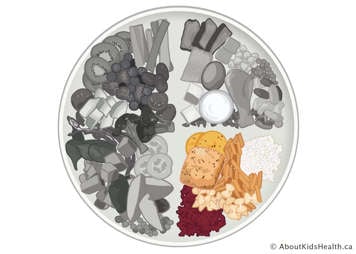What are whole grains?
Whole grains contain all three parts of a plant’s seed—the bran, the endosperm and the germ. When the germ and the bran are removed from the grain, the grain is considered “refined” (examples include white rice and white flour). These are not as nutritious as whole grains because some of the proteins, fibre and nutrients have been removed. Whole wheat foods are often partially refined, which means they may not be whole grain foods but are still healthy choices.
Examples of whole grains include:
- Whole grain brown rice
- Whole grain wild rice
- Whole grain pasta
- Whole grain breads
- Whole grain oatmeal
- Quinoa
- Barley
- Buckwheat
- Farro
- Freekah
- Amaranth
Benefits of whole grain products
Whole grain products are full of nutrients that help support many of the body’s functions, which means that they help maintain good health. Some examples of the nutrients found in whole grains include fibre, B vitamins (niacin, thiamine and folate) zinc, magnesium and manganese.
Fibre helps the digestive system work properly. Fibre is highest in whole grain foods and can also be found in whole wheat foods.
B vitamins (niacin, thiamine and folate) are important for helping tissues grow and making healthy red blood cells.
Zinc and magnesium have many roles in the human body including helping the body’s immune system work properly, and manganese helps with growth and brain development.
Serving tips
Whole grains should be eaten every day. Aim to include whole grains with most meals and snacks. Canada’s Food Guide recommends that adults and children fill one quarter of their plate with whole grains as part of a balanced meal.

Examples of how you can increase the amount of whole grains in your diet:
- Add barley, bulgur and quinoa to soups, salads and stir-fries.
- Try mixing brown or wild rice with white rice for more fibre and a nutty flavour.
- Try using quinoa or oat flour for baked goods, and add whole oats to muffins or cookies.
- Start your day with a bowl of warm oatmeal.
- Use the nutrition facts table on packaged foods. Look for the words ‘whole grain’ and choose foods that are high in fibre and low in fat, sugar and salt more often.
Be creative and get inspired to find other delicious ways to include whole grains in your family’s meals and snacks.